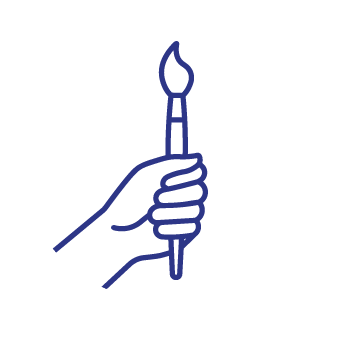Artists & Other Cultural Workers
Learn about who works in the arts and cultural sector

Key indicators include:
A.1. Who are the artists?
Number of artists by occupation, demographic, and other individual characteristics
A.2. Who are the other cultural workers?
Number of other cultural workers, by occupation, demographic, and other individual characteristics.
A.3. Where are artists and other cultural workers located in the United States?
Number of artists and other cultural workers, by occupation and local geography.
A.7. What are the earnings for artists and other cultural workers?
Earnings and household income, by occupation.
A.8. What are the labor market outcomes for young artists and other cultural workers?
Employment, earnings, and household income for young artists and other cultural workers by occupation.
Arts Participants
Learn about arts activities and the characteristics of arts participants

Key indicators include:
B.1. Who attends arts events in person?
Demographic characteristics of individuals attending arts events or venues in person.
B.3. Who is personally creating or performing art?
Individuals personally creating or performing art, by demographic characteristics.
B.4. How much time do Americans spend on arts activities?
Time participating in select arts activities, by demographic characteristics.
Arts and Cultural Assets
Learn about arts and cultural industries, businesses, and funding

Key indicators include:
C.1. What do the arts contribute to the U.S. economy?
Value added to GDP, by arts industries.
C.2. Which industries employ artists and other cultural workers?
Direct employment, by arts industries.
Arts and Education
Learn about who studies and teaches the arts

Key indicators include:
D.1. Who majors in the arts?
Demographics of graduates in arts and cultural fields of study from postsecondary institutions.
D.2. Who teaches the arts in schools?
Number and characteristics of elementary and secondary art teachers and postsecondary faculty.
Artists & Other Cultural Workers
Learn about who works in the
arts and cultural sector

Arts Participants
Learn about arts activities and the characteristics of arts participants

Arts and Cultural Assets
Learn about arts and cultural
industries, businesses, and funding

Arts and Education
Learn about who studies
and teaches the arts
